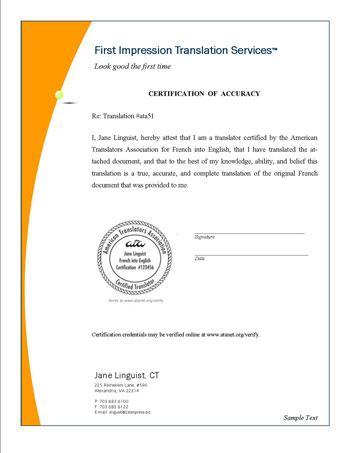What is a Certificate of Translation?
A Certificate of Translation is a formal document that verifies the accuracy and completeness of a translation from one language to another. This certification is provided by a professional translator or translation service, affirming that the translated content is a true and faithful representation of the original document. The certificate typically includes details such as the translator’s qualifications, the date of translation, and a statement confirming the accuracy of the translation.
Why You May Need a Certificate of Translation
There are several instances where a Certificate of Translation is necessary. These include legal proceedings, immigration applications, academic admissions, and international business dealings. Certified translations are often required for documents such as birth certificates, marriage certificates, legal contracts, and academic records when they are submitted to foreign authorities or institutions. The primary reason for needing a certified translation is to ensure that all parties involved can rely on the accuracy of the translated document, thereby facilitating clear and effective communication across language barriers.
Where You Can Get a Certificate of Translation
Professional translation services are the go-to sources for obtaining a Certificate of Translation. These services employ professional translators who have the expertise and qualifications to provide accurate translations and the necessary certification. It’s important to choose a reputable service that understands the specific requirements of the document’s intended use, whether for legal, academic, or business purposes. Various countries and organizations may have specific standards and requirements for certified translations, so selecting a service familiar with these nuances is crucial.
How to Create a Certificate of Translation
Creating a Certificate of Translation involves a few key steps:
- Identification of Needs: First, identify the type of certification required, considering the document’s intended use and the standards of the receiving country or organization.
- Selecting a Service: Choose a professional translation service or translator who is proficient in both the source and target languages and familiar with the document’s field.
- Translation and Review: The document is then translated and reviewed for accuracy, ensuring that it maintains the original’s meaning, tone, and context.
- Certification: The translator or translation service will provide a Certificate of Accuracy or a similar document that includes their contact information, qualifications, and a statement certifying the translation’s accuracy and completeness.
It’s essential to work with a professional and qualified translator or service to ensure that the translated document and its certification meet the necessary legal and procedural standards.
For more detailed guidance on obtaining a Certificate of Translation, including the specific requirements and processes involved, consult professional sources like Translayte and LinguaOne.
The following is an example of a Certificate of Translation that you can view and modify as needed.
